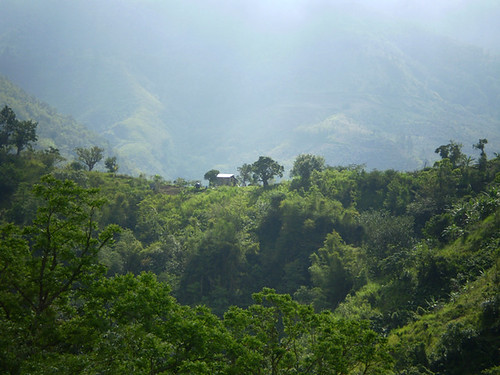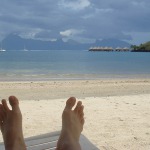口感與香味獨步全球的「藍山咖啡」,其產地牙買加藍山(Blue Mountain)3日正式成為該國的第一座世界遺產。
 |
| 牙買加的藍山。圖片來源:WELS.net。(CC BY-NC 2.0) |
人文與自然兼具 牙買加第一座世界遺產
3日,聯合國將藍山與約翰克羅山列入世界遺產名錄,且因此處的自然生態與人文歷史均相當特殊,並列為自然遺產和文化遺產,成為一座複合式世界遺產。
此處茂密的森林曾是奴隸原住民泰諾人(Tainos)和18世紀非洲黑奴(Maroon)逃亡時的藏身之處。除了提供逃亡期間所需的所有物資,黑奴和約翰克羅山之間堅強的情感連結,從宗教儀式、傳統醫藥和舞蹈等文化遺產可見一斑。
日後,他們將逃亡路線、躲藏處和安身處串連成網,抵抗歐洲殖民系統。這些網絡就是後來的保母鎮路徑遺址(Nanny Town Heritage Route)。今日,當地的黑奴後代社群仍將這裡視為聖地,積極參與管理。
不同於牙買加最高峰石灰岩高原,藍山與約翰克羅山擁有全島最豐富的生態系統多樣性和棲地,也是加勒比海地區最完整的淨土和生物多樣性熱點,特有植物物種比例高,尤其是地衣、苔蘚和開花植物。這裡半數開花植物是特有種,生長在海拔900至1000公尺的約翰克羅高原,獨特的山地熱帶雨林遍佈藍山的陡峭山坡和崎嶇地形上。
南非好望角 遺產擴張獲准
同時,南非好望角植物保護區(Cape Floral Region)和越南峰牙─己榜國家公園(Phong Nha-Ke Bang National Park)的擴張申請,也都經聯合國教科文組織世界遺產委員會核准。
2004年列入世界遺產的南非好望角植物保護區,面積增加一倍,從553,000公頃增加至1,094,741公頃。
好望角植物保護區位於南非最西南角,是全世界陸地生物多樣性最豐富的地點之一。延伸區域包括國家公園、自然保護區、野外地區、國家森林和山地集水區,將能適應地中海氣候和週期性森林火災的「Fynbos」植被(源自荷蘭語「fijnbosch」,意指細葉灌木植被)與相關原生種納入保護。
好望角植物保護區涵蓋的13個保護區總面積不到非洲0.5%的土地面積,但卻擁有非洲大陸20%的植物物種。9,000種植物物種中,有70%是特有種。世界遺產涵蓋面積增加後,有更多物種能獲得世界級的保護,也加強各保護區之間的連結。
越南石灰岩地形 遺產擴張獲准
越南峰牙-己榜國家公園2003年因珍貴地理價值列入世界遺產,原本的面積是85,754公頃。擴張後面積增加為126,236公頃,和寮國東部的Hin Namno自然保護區接壤。
延伸區域位於安南生態熱區,是許多瀕危大型動物的棲地,包括雲豹、大麂叉鹿角和極度瀕危的中南大羚。這裡也是白臀葉猴葉猴和南部白頰長臂猿等瀕危靈長類的重要棲地。
這座國家公園是石灰岩高原和熱帶雨林組成,擁有高度生物多樣性和許多特有種。此外地理多樣性更是豐富,大量的天然洞穴和地下河流形成獨特的地景。
世界遺產面積擴張讓當地生態系統更加完整,保護生態和生物多樣性的價值,同時也保護了具有維持石灰岩地形功能的集水區。
Jamaica’s rugged Blue and John Crow Mountains, where thick forests once sheltered fleeing slaves, today became the Caribbean island nation’s first World Heritage site.
Extensions of South Africa’s Cape Floral Region Protected Areas and Vietnam’s Phong Nha-Ke Bang National Park were also approved at the UNESCO World Heritage Committee meeting taking place in Bonn through July 8.
Jamaica’s Blue and John Crow Mountains has been inscribed as a “mixed” site, in recognition of both the area’s natural uniqueness and its cultural values.
The site encompasses a forested, mountainous region in Jamaica’s southeast, which provided refuge first for the indigenous Tainos fleeing slavery and then for escaped African slaves known as Maroons. They resisted the European colonial system in this isolated region by establishing a network of trails, hiding places and settlements, which form the Nanny Town Heritage Route.
The dense forests offered the 18th century Maroons everything they needed for survival. They developed strong spiritual connections with the mountains, still manifest through the intangible cultural legacy of, for example, religious rites, traditional medicine and dances. Today, local Maroon communities still identify with the area and are actively engaged in its management.
Combining Jamaica’s highest peak with a contrasting limestone plateau, the site contains the greatest diversity of ecosystems and habitats on the island, also among the most intact in the Caribbean region.
The site is a biodiversity hotspot for the Caribbean Islands with a high proportion of unique plant species, especially lichens, mosses and flowering plants.
Half of the flowering plants growing at 900 to 1,000 meters on the John Crow plateau are found nowhere else in the world, while unique montane tropical forests hang on the steep slopes and rugged landscape of the Blue Mountains.
The World Heritage Committee this morning also approved the extension of two natural sites inscribed on the World Heritage List: Cape Floral Region Protected Areas in South Africa and Ke Bang National Park in Vietnam.
The World Heritage Committee doubled the extent of the Cape Floral Region Protected Areas in South Africa, inscribed on the World Heritage List in 2004, from 553,000 to 1,094,741 hectares.
Located at the southwestern extremity of South Africa, it is one of the world’s great centers of terrestrial biodiversity. The extended site includes national parks, nature reserves, wilderness areas, State forests and mountain catchment areas.
These elements add endemic species associated with the Fynbos vegetation, a fine-leaved shrubland adapted to both a Mediterranean climate and periodic fires, which is unique to the Cape Floral Region.
While the 13 protected areas that make up the site represent less than 0.5 percent of Africa’s landmass, together they host 20 percent of the continent’s plants. About 70 percent of the 9,000 plant species are found nowhere else on Earth. The extension increases the number of vegetation types under World Heritage protection and allows better connectivity among all the site’s components.
The Phong Nha-Ke Bang National Park, inscribed on the UNESCO World Heritage List in 2003 for its geological values, originally covered 85,754 hectares. With this extension, the site covers a total surface area of 126,236 hectares – a 46 percent increase – and shares a boundary with the Hin Namno Nature Reserve in Laos.
The park is shaped by limestone plateaux and tropical forests harbors a high level of biodiversity and many endemic species. It features great geological diversity and offers spectacular phenomena, including a large number of caves and underground rivers, said the World Heritage Committee.
The extension ensures a more coherent ecosystem. It now includes protection for ecological and biodiversity values while providing additional protection to the water catchment areas that are of vital importance for the integrity of limestone landscapes.
Located in the Annamite ecoregion hotspot, the extended area is home to globally threatened species, including large mammals such as the Clouded Leopard, the Large-antlered Muntjac and the critically endangered Saola. The park is of particular importance for the conservation of endangered primates, such as the Red-shanked Douc Langur and the Southern White-cheeked Gibbon.
※ 全文及圖片詳見:ENS






